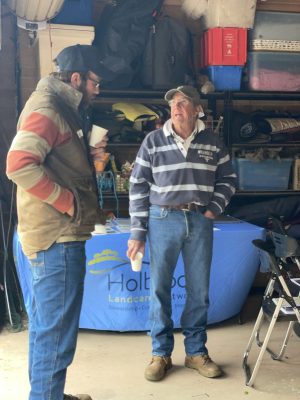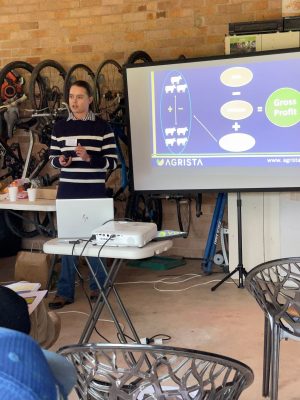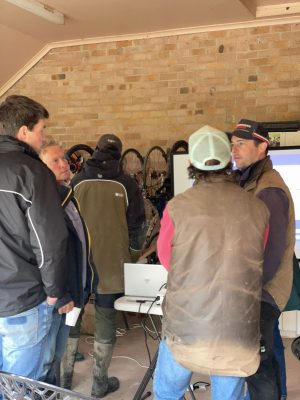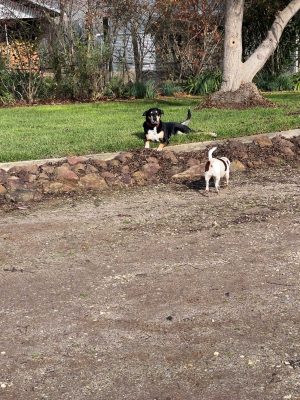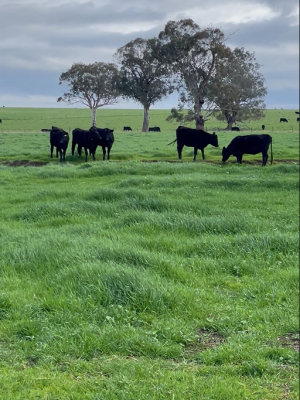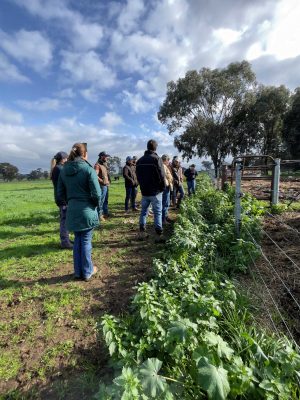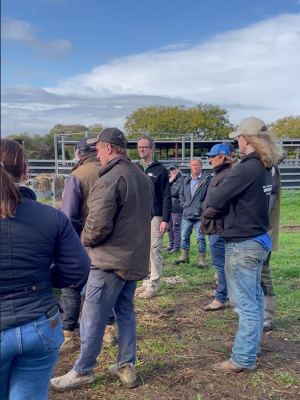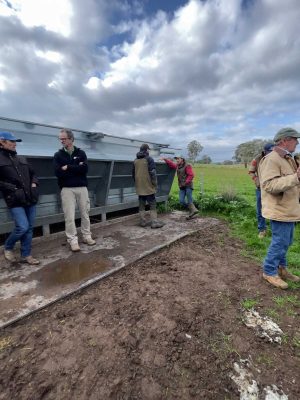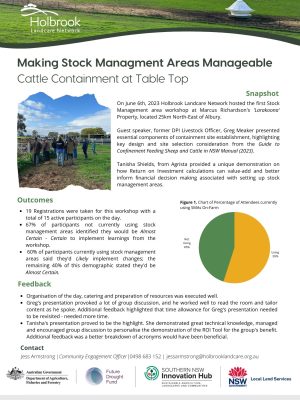Making Stock Management Areas Manageable
Cattle Workshop - Table Top NSW
Project Officer, Jess Armstrong, bought together industry experts, Greg Meaker (former DPI Livestock Officer), Tanisha Shields (Agrista) and a group of local producers to discuss the essential considerations for using Stock Management Areas in their cattle enterprises.
Held on the 6th June at Marcus’s Richardson’s ‘Larakoona’, Table Top, thirteen producers were presented with honest, clear and producer tried-and-tested advice. Greg covered the importance of site selection, pen design and strategic compromise to improve cost-effectiveness and on-farm suitability of SMAs. Greg presented an informative and practical approach to utilising stock management areas for containment feeding during drought times, and annual weaning and autumn break pasture management.
Following a quick morning Tea Tanisha took the reins, delivering an effective crash course introduction to the principles of investing. Pushing for producer participation, Tanisha provided the background of financial principles relevant to farm based business. Highlighting the characteristics of enterprise expenses, such as Animal Health, Contracting, Supplementary Feeding and Agistment, and Overhead Expenses, such as Wages, Fuel, Electricity and Insurance. Tanisha set the scene to demonstrate the benefits of using Return of Investment Tools to guide and rationalise the decision to establish and maintain stock management areas during drought and outside of drought.

Greg Meaker (former DPI Livestock Officer)
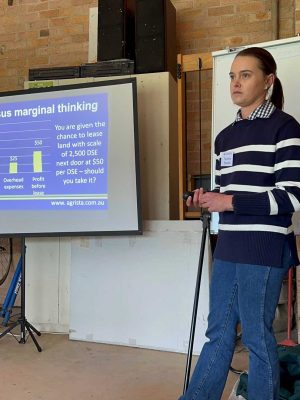
Tanisha Shields (Agrista Pty Ltd)

To close off the day we took the opportunity for a site walk and talk through Marcus’s Cattle Confinement. Marcus, who uses his confinement area to feed weaning Angus cattle during the year, discussed the main motivators for using an SMA on the property: maintaining weight and protecting vulnerable pastures. With Greg and Tanisha to facilitate discussions, there was a focus on poor drainage and how to overcome this issue, and on Marcus’s use of self-feeders with blower attachments for quick and efficient filling of pellets from a compatible feed truck.
Overall, it was a very successful morning for all who were involved with plenty of new information presented, as well as opportunities to build on existing knowledge.
Presentation Recording & Report
Other Resources
Agriculture Victoria. (2018). Sheep Drought Feeding Guide. State of Victoria Government Department of Economic Development, Jobs, Transport and Resources. https://www.feedinglivestock.vic.gov.au/wp-content/uploads/2019/03/Sheep-drought-feeding-guide.pdf
Andrews, T. & Littler, B. (2019). Confinement Feeding Stock. NSW Government, Department of Primary Industries. https://www.dpi.nsw.gov.au/animals-and-livestock/beef-cattle/feed/confinement-feeding-cattle-drought
Australian Wool Innovation. (2019). Releasing Sheep from containment feeding. Australian Wool Innovation. https://www.wool.com/globalassets/wool/land/drought-resources/accordion-3/releasing-sheep-from-containment-feeding-v3.pdf
Department of Primary Industries. (n. d.). Drought and Supplementary Feed Calculator. NSW Government Department of Primary Industries. https://www.dpi.nsw.gov.au/animals-and-livestock/nutrition/feeding-practices/drought-and-supplementary-feed-calculator
MLA. (2020). What to consider before containment feeding. Meat and Livestock Australia. https://www.mla.com.au/news-and-events/industry-news/what-to-consider-before-containment-feeding/
Robertson, S. (2020). Managing Breeding Ewes in Containment Areas, A Guide for Producers. Meat and Livestock Australia. https://www.mla.com.au/globalassets/mla-corporate/extensions-training-and-tools/documents/managing-breeding-ewes-in-containment-areas.pdf?utm_campaign=147335_FFBK+-+27+November&utm_medium=email&utm_source=Meat+&+Livestock+Australia&dm_i=4PKB,35ON,HSIAO,AG6M,1
This project is lead by the NSW Local Land Services, in partnership with The Southern NSW Drought Innovation Hub, Holbrook Landcare Network, Irrigated Cropping Council, FarmLink Research, Central West Farming Systems, Southern Growers, Riverine Plains, Soil Knowledge Network, and Charles Sturt University.
This Project is funded through the Federal Government’s Future Drought Fund (FDF) Drought Resilient Soils and Landscapes (DRSL) Grants Program.


